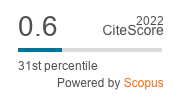The Advantages of Qualitative Research into Femicide
DOI:
https://doi.org/10.18778/1733-8077.13.3.08Keywords:
Femicide, Survivors, Qualitative Research, Non-Generalizability, Narratives, Interviews, Perpetrator, Victim, Policy, Mixed-MethodsAbstract
This article reviews the state of the art of qualitative research on femicide, which, until the publication of this Special Issue, has been extremely sparse. The paper mentions some of the limitations of the qualitative approach, such as time consumption, ethical liabilities, and non-generalizability. However, it advocates qualitative research because of its advantages in capturing the context, describing the experience, identifying the motives, highlighting the relationship between perpetrator and victim, identifying the risk factors, and suggesting apt policies. The article concludes by cautiously recommending a mixed-/merged-methods approach, which, in turn, depends upon the research question and has its own inherent disadvantages.
Downloads
References
Adams, David. 2009. “Predisposing Childhood Factors for Men Who Kill Their Intimate Partners.” Victims & Offenders 4(3):215- 229.
Google Scholar
DOI: https://doi.org/10.1080/15564880903048479
Adinkrah, Mensah. 2008. “Husbands Who Kill Their Wives: An Analysis of Uxoricides in Contemporary Ghana.” International Journal of Offender Therapy and Comparative Criminology 52(3):296-310.
Google Scholar
DOI: https://doi.org/10.1177/0306624X07307119
Calderón Gómez, Carlos. 2009. “Assessing the Quality of Qualitative Health Research: Criteria, Process and Writing.” Forum: Qualitative Social Research 10(2). Retrieved June 24, 2017: http://www.qualitative-research.net/index.php/fqs/article/view/1294
Google Scholar
Campbell, Jacquelyn C. et al. 2003. “Risk Factors for Femicide in Abusive Relationships: Results from a Multisite Case Control Study.” American Journal of Public Health 93(7):1089-1097.
Google Scholar
DOI: https://doi.org/10.2105/AJPH.93.7.1089
Dobash, Emerson R et al. 2004. “Not an Ordinary Killer — Just an Ordinary Guy. When Men Murder an Intimate Woman Partner.” Violence against Women 10:577-605.
Google Scholar
DOI: https://doi.org/10.1177/1077801204265015
Ercikan, Kadriya and Wolff-Michael Roth. 2006. “What Good Is Polarizing Research into Qualitative and Quantitative?” Educational Researcher 35(5):14-23.
Google Scholar
DOI: https://doi.org/10.3102/0013189X035005014
Ercikan, Kadriya and Wolff-Michael Roth. 2009. Generalizing from Educational Research: Beyond Qualitative and Quantitative Polarization. New York, London: Routledge.
Google Scholar
DOI: https://doi.org/10.4324/9780203885376
Gill, Paul W. et al. 2008. “Methods of Data Collection in Qualitative Research: Interviews and Focus Groups.” British Dental Journal 204:291-295.
Google Scholar
DOI: https://doi.org/10.1038/bdj.2008.192
Gobo, Giampietro. 2015. “The Next Challenge: From Mixed to Merged Methods.” Qualitative Research in Organizations and Management 10(4):329-331.
Google Scholar
DOI: https://doi.org/10.1108/QROM-07-2015-1309
Kapardis, Andreas, Anna Costanza Baldry, and Maria Konstantinou. 2017. “A Qualitative Study of Intimate Partner Femicide and Orphans in Cyprus.” Qualitative Sociology Review 13(3):80-100.
Google Scholar
DOI: https://doi.org/10.18778/1733-8077.13.3.06
McNamara, Patricia. 2008. “Changed Forever: Friends Reflect on the Impact of a Woman’s Death through Intimate Partner Homicide.” Journal of Family Studies 14:198-216.
Google Scholar
DOI: https://doi.org/10.5172/jfs.327.14.2-3.198
McFarlane, Judith et al. 1999. “Stalking and Intimate Partner Femicide.” Homicide Studies 3:300-316.
Google Scholar
DOI: https://doi.org/10.1177/1088767999003004003
Nicolaidis, Christina et al. 2003. “Could We Have Known? A Qualitative Analysis of Data from Women Who Survived an Attempted Homicide by an Intimate Partner.” Journal of General Internal Medicine 18:788-794.
Google Scholar
DOI: https://doi.org/10.1046/j.1525-1497.2003.21202.x
Sheehan, Brynn E. et al. 2015. “Intimate Partner Homicide: New Insights for Understanding Lethality and Risks.” Violence against Women 21(2):269-288.
Google Scholar
DOI: https://doi.org/10.1177/1077801214564687
Weil, Shalva. 2016a. “Making Femicide Visible.” Current Sociology 64(7):1124-1137.
Google Scholar
DOI: https://doi.org/10.1177/0011392115623602
Weil, Shalva. 2016b. “Failed Femicides among Migrant Survivors.” Qualitative Sociology Review 12(4):6-21.
Google Scholar
DOI: https://doi.org/10.18778/1733-8077.12.4.01
WHO. 2012. Understanding and Addressing Violence against Women. Geneva: World Health Organization. Retrieved July 26, 2016: http://apps.who.int/iris/bitstream/10665/77421/1/WHO_RHR_12.38_eng.pdf
Google Scholar
Downloads
Published
How to Cite
Issue
Section
License

This work is licensed under a Creative Commons Attribution-NonCommercial-NoDerivatives 4.0 International License.











